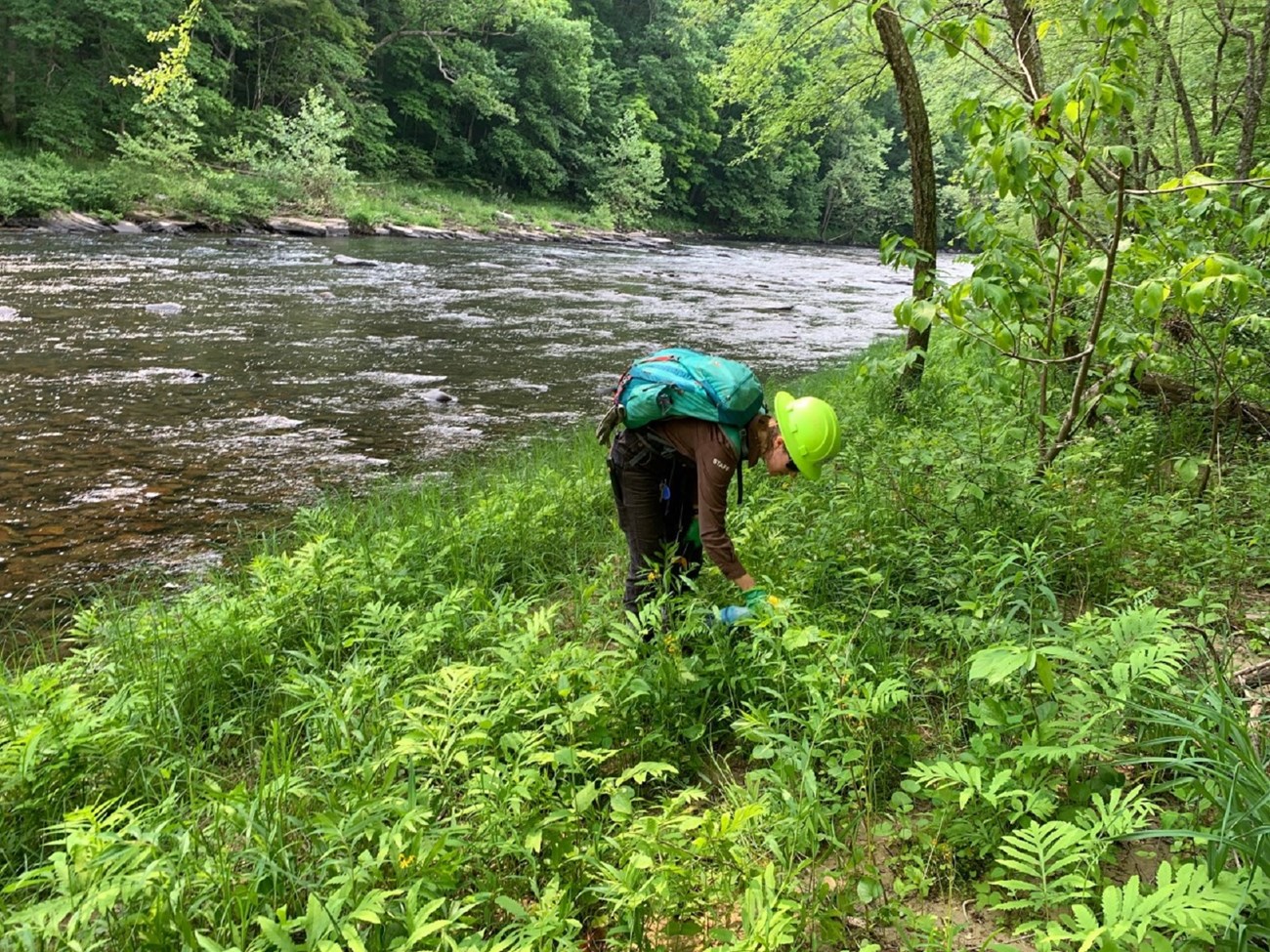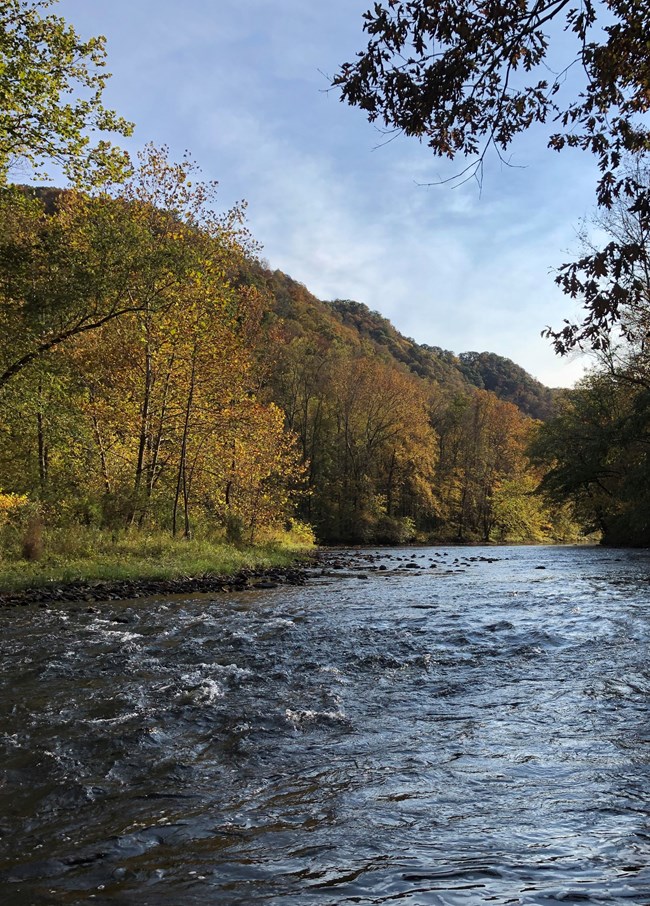Last updated: January 21, 2022
Article
Bluestone National Scenic River Works to Recover Virginia Spiraea

Douglas Manning
Content submitted by: Douglas Manning, Bluestone National Scenic River
Bluestone National Scenic River (BLUE) protects 10.5 miles of the Bluestone River in southern West Virginia. The gorge created by the river is steep, hosting a diverse assemblage of plant communities. However, it is the riparian communities adjacent to the river that contain some of the highest biodiversity in the park. One species of particular interest in this habitat is the rare shrub, Virginia spiraea (Spiraea virginiana).
In 1990, the US Fish and Wildlife Service (USFWS) designated Virginia spiraea as “Threatened” under the Endangered Species Act (ESA). Virginia spiraea is historically known to have occurred in nine states (Alabama, Georgia, Kentucky, North Carolina, Ohio, Pennsylvania, Tennessee, Virginia, West Virginia), with seven of those states (Georgia, Kentucky, North Carolina, Ohio, Tennessee, Virginia, West Virginia), presently supporting populations across 32 watersheds (USFWS 1990). The species occurs along rivers and streams and is dependent on periodic disturbances, such as scouring floods, to maintain its preferred habitat. Alterations in stream-flow patterns, including dams, river access development, and recreational use of river corridors, have had and continue to have negative impacts on Virginia spiraea throughout much of its range. Invasive plants such as autumn-olive (Elaeagnus umbellata), multiflora rose (Rosa multiflora), and Japanese knotweed (Polygonum cuspidatum) pose another threat through direct competition. BLUE has no surviving occurrences; however, Virginia spiraea still exists just upstream of the park boundary along the banks of the Bluestone River. It is highly likely that Virginia spiraea was once established within the BLUE boundary, and potential habitat for the species abounds.

Bryan Manning
In 2019, the NPS secured funding to assist in the recovery of Virginia spiraea under the ESA in both BLUE and Gauley River National Recreation Area (GARI). Implementation began in summer of 2021 when the NPS began removing invasive plants from areas of suitable habitat along the Bluestone River. Crews from the NPS Natural Resource Management Team and the Northeast Invasive Plant Management Team as well as NPS interns from American Conservation Experience began a planned, multi-year treatment of invasive plants in rare and at-risk riparian plant communities. These management efforts will help to maintain and bolster these vulnerable communities.
As the project continues, the NPS plans to collect, propagate, outplant, and monitor Virginia spiraea in both BLUE and GARI in collaboration with West Virginia Department of Natural Resources, the USFWS, Mt. Cuba Center, and other taxon experts. Propagules will come from cuttings from extant occurrences in the Bluestone, Gauley, and Meadow River watersheds. These cuttings will be grown to adequate outplanting size by experts at the Mt. Cuba Center. Genetic fidelity will be carefully maintained across watersheds. Through this work, the NPS aims to assist in the ultimate purpose and goal of the ESA, "...to protect and recover imperiled species and the ecosystems upon which they depend."
